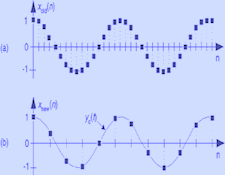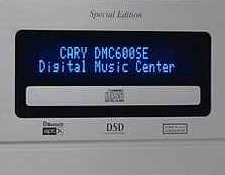It’s the time of year for saving money!
In days of yore it was so simple, all an audiophile really needed to do to hear a particular recording at its best was to listen to the original master (or as close to it as they could get to it) in the original format (ideally played back with the same gear it was made with.)
 Even today 95% of the time this tried and true formula works – read any of Michael Fremer’s fine pieces on Analog Planet and you can get an inkling into how superb some early pressings can sound and how close they can get to the sound of the original analog tape. Even in the modern digital age of recording, If a session was done at 96/24, a playback of the final master will usually sound best at that native rate as opposed to down or up-sampling it. But what about that last 5%?
Even today 95% of the time this tried and true formula works – read any of Michael Fremer’s fine pieces on Analog Planet and you can get an inkling into how superb some early pressings can sound and how close they can get to the sound of the original analog tape. Even in the modern digital age of recording, If a session was done at 96/24, a playback of the final master will usually sound best at that native rate as opposed to down or up-sampling it. But what about that last 5%?
It should be obvious to everyone that down-sampling a digital file to a lower resolution digital format will cause a reduction of overall fidelity when compared to the original master. But upsampling is different. Here the first question you must consider is “Why would you want to upsample a file from its native digital format?” I think answer is that some DACs perform their tasks more accurately and with greater efficiency when given a particular sample-rate. The well-respected PS Audio Direct Stream DSD upsamples everything to it’s preferred 10x DSD rate for processing. Many other DACs upsample their incoming digital stream to a higher bit-rate and sampling rate before routing the signal to their digital processor.
 If a particular DAC performs best at a particular higher bit and sample rate the question then becomes where the upsampling should occur. With some DACs, such as the PS Audio, since the DAC will upsample every source, there’s no need to do any pre-DAC upsampling, but with other DACs you could see a performance increase by feeding them an already upsampled source. This upsampling could either occur real-time in your computer or you could have converted the files in advance and stored higher-resolution versions of the original files.
If a particular DAC performs best at a particular higher bit and sample rate the question then becomes where the upsampling should occur. With some DACs, such as the PS Audio, since the DAC will upsample every source, there’s no need to do any pre-DAC upsampling, but with other DACs you could see a performance increase by feeding them an already upsampled source. This upsampling could either occur real-time in your computer or you could have converted the files in advance and stored higher-resolution versions of the original files.
Recently I reviewed the CARY DMC-600SE digital music hub for Home Theater Review. One of the tests I did was to compare a USB feed from my Mac Mini with the wireless Bluetooth feed from the same computer. In the past this test’s results were uniformly obvious – the USB feed offered higher fidelity. But with the Cary this was not the case due to the fact that the Cary could upsample the Bluetooth signal to 768 kHz but could not upsample the USB feed. Sometimes in these tests the Bluetooth signal was my preferred source. I was also surprised to find that the upsampled lossy stream from my iPhone was equal to and on a few selections even seemed better fidelity than the native, lossless, signal from the Mac Mini’s USB feed. Using CD sources, which the Cary could also upsample, I spent quite a bit of time seeing if the DMC-600SE’s upsampling features would yield any universal sonic improvements. After several different sessions spread over several days I had to conclude that the upsampling was highly source-dependent. On many CD tracks I couldn’t discern any audible difference between the various sample rates. But with a small percentage of CDs the soundstage was definitely larger, more well defined, and easier to listen into than the native rate version.
 Plangent Process re-mastered releases have made it quite obvious that there are professional systems that can produce a better results than even the original analog masters (because Plangent can correct time and frequency errors), but my own experience has shown me that even in a home system upsampling can sometimes deliver higher fidelity than the native rate can. Unfortunately for those audiophiles who want easy, universal answers to complex questions, so far there is no universal truth on whether upsampling is always the right thing to do.
Plangent Process re-mastered releases have made it quite obvious that there are professional systems that can produce a better results than even the original analog masters (because Plangent can correct time and frequency errors), but my own experience has shown me that even in a home system upsampling can sometimes deliver higher fidelity than the native rate can. Unfortunately for those audiophiles who want easy, universal answers to complex questions, so far there is no universal truth on whether upsampling is always the right thing to do.
My takeaway from all this is that the only way you can hear whether upsampling your digital files will offer a noticeable sonic improvement on your system is to put together your own listening tests and find out. On the Cary DMC-600SE it made a difference; on your gear obviously your mileage may vary.





